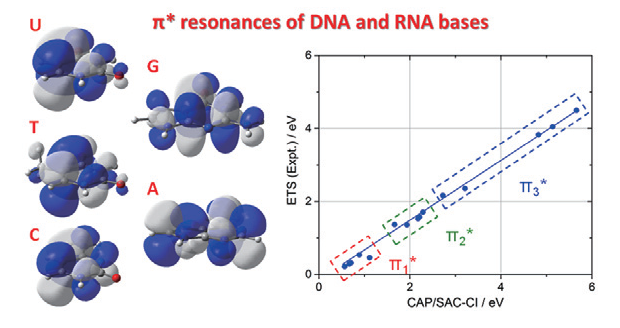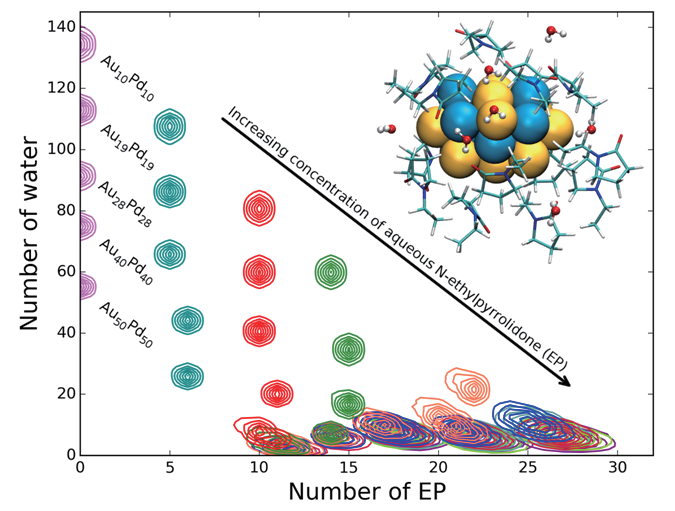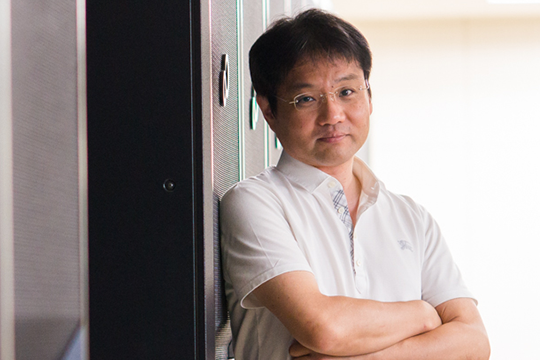Research Theme
Fundamental Chemistry of Complex Systems using Advanced Electronic Structure Theories
Keywords
Quantum Chemistry, Photophysical Chemistry, Heterogeneous Catalysis
Various chemical phenomena in nature appear originating in molecular electronic states. We develop the advanced electronic structure theories to investigate the photochemistry and catalysis. Our current research subjects are as follows.
(1) Advanced electronic structure theories for large complex systems Complex electronic structure exists in molecular electronic states and chemical reactions. We develop the advanced electronic structure theories and their efficient computational algorithm applicable to large complex systems and investigate various phenomena in fundamental and applied chemistry; for example, PCM SAC-CI for the solvent effects on excited states and chemical reactions, CAP/SAC-CI and ACCC SAC-CI for metastable resonance states, SAC-CI general-R for complex electronic states, and XP-PCM for high pressure effects on electronic states and reactions.
(2) Heterogeneous catalysts Metal nanoclusters (NC) supported by metal oxides or colloidal phase polymers achieve highly efficient catalytic reactions. We study the catalytic activity of these complex systems in view of metal support interaction and alloy effects using quantum chemical calculations. For example, we elucidated the mechanism of the low-temperature C-Cl activation on Au-Pd NC:PVP, various catalytic reactions on Au NC:PVP, and the H2 activation of Ag NC/alumina. We challenge the development of advanced heterogeneous catalysts in the project of Elements Strategy Initiative for Catalysts and Batteries (ESICB) collaborating with experimental groups.

Fig. 1 Electronic resonance states of DNA/RNA nucleobases
 Fig. 2 Solvation dynamics of Au/Pd alloy nanocluster
Fig. 2 Solvation dynamics of Au/Pd alloy nanocluster
Selected Publications
-
M. Ehara, T. Sommerfeld, “CAP/SAC-CI Method for Calculating Resonance States of Metastable Anions,” Chem. Phys. Lett. 537, 107-112 (2012).
-
R. Cammi, R. Fukuda, M. Ehara, H. Nakatsuji, “SAC-CI Method in the Polarizable Continuum Model-Theory for Solvent Effect on Electronic Excitation of Molecules in Solution,” J. Chem. Phys. 133, 024104-1-24 (2010).
-
R.N. Dhital, C. Kamonsatikul, E. Somsook, K. Bobuatong, M. Ehara, S. Karanjit, H. Sakurai, “Low-Temperature Carbon-Chlorine Bond Activation by Bimetallic Gold/Palladium Alloy Nanoclusters: An Application to Ullmann Coupling,” J. Am. Chem. Soc. 134, 20250-20253 (2012).
-
P. Hirunsit, K. Shimizu, R. Fukuda, S. Namuangruk, Y. Morikawa, M. Ehara, “Cooperative H2 Activation at Ag Cluster/θ-Al2O3(110) Dual Perimeter Sites: A Density Functional Theory Study,” J. Phys. Chem. C. 118, 7996-8006 (2014).



 Fig. 2 Solvation dynamics of Au/Pd alloy nanocluster
Fig. 2 Solvation dynamics of Au/Pd alloy nanocluster